
(a.k.a. the American Romantic Era; 1820s-1860s or generation before US Civil War)
Fall 2018 Mondays 4-6:50pm, Bayou 1213
Homepage & Syllabus
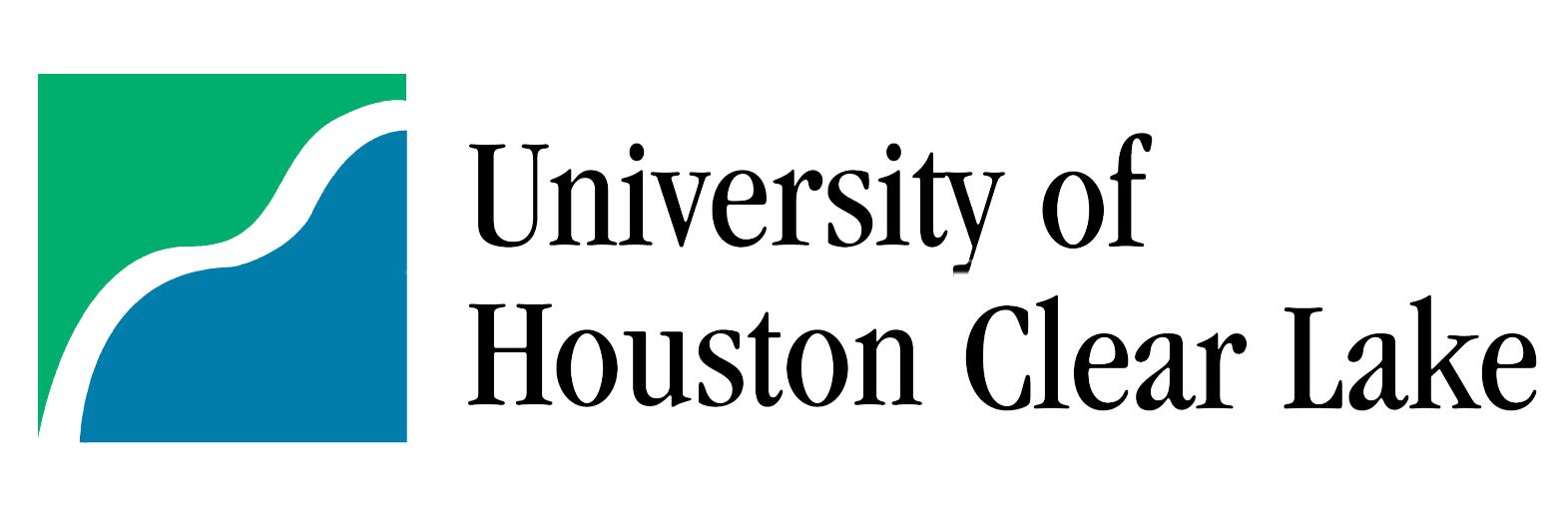
terms index
 |
LITR 4328 American
Renaissance (a.k.a. the American Romantic Era; 1820s-1860s or generation before US Civil War) Fall 2018 Mondays 4-6:50pm, Bayou 1213 Homepage & Syllabus |
 terms index
|
Instructor: Craig White Office:
Bayou 2529-8 Office Hours: M 2-4, 7-8, & by appointment URL: http://coursesite.uhcl.edu/HSH/Whitec/LITR/4232 Course Policies incl. Attendance; Disabilities Provisions Attendance policy: You are expected to attend every scheduled class meeting but are permitted one free cut without comment or penalty.
|
Emerson Assignments
midterm &
research proposal
final exam
research project
presentations reading assignment discussion leader model assignments presentation
Fuller |
Reading & Presentation Schedule, fall 2018
No Required Textbooks—all texts available online
(If you want a print anthology, most but not all
selections below are available in standard American literature anthologies you can buy
online or at used bookstores.)
![]()
|
Monday, 27 August 2018: introduction(s), concept of American Renaissance; Romanticism Readings: Declaration of Independence (1776); U.S. Constitution (1789) Walt Whitman, "I Sing the Body Electric" (Whitman style sheet) Emily Dickinson, [Wild Nights] (Dickinson style sheet) Edgar Allan Poe, "Romance" (Poe Style Sheet) Questions for poems: What is Romantic or typical of this author's style? terms: Romanticism, American Renaissance, Maps of North America; formal verse, free verse; lyric poetry |
Agenda—2hrs 15mins? introduction, syllabus, website, periods semester assignments; model assignments student presentations, preferences + volunteers for 10 Sept? [break--5-10 minutes?] 10 Sept. assignments, discussion questions, presenters? Romanticism big, baggy concept, full of contradictions, like us objectives, historical period Sample poems: final exam |
|
|
Discussion Questions:
For poetry by Poe, Dickinson, & Whitman
1. How do the poems differ in style and content? What do they have in common (that might be Romantic)
2. What attitudes, impulses, or images may be called Romantic? Contrast Realism?
3. Do the things we call "Romantic" have anything in common? Contrast Realism?
|
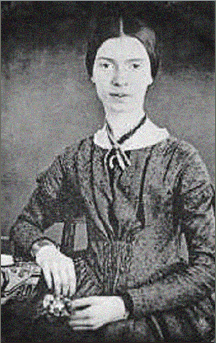 Dickinson |
![]()
Monday, 3 September: Labor Day Holiday—No class meeting
![]()
|
Monday, 10 September 2018: Terms for Romanticism Terms: Gothic, Sublime, Romance, Transcendentalism; terms; Romanticism Reading assignment(s): Transcendentalism: Ralph Waldo Emerson, selections from Nature (1836) Gothic: Edgar Allan Poe, Ligeia (1839, 1845) (Poe Style Sheet)
text reader(s) / discussion leader(s): Rudy
Rios (Emerson); Virginia DeLeon (Poe)
Web Review: Hudson River School of American Painters Web Reviewer: instructor (periods) (postponed) |
Agenda: email? presentation preferences + poetry prsns preview midterm: terms; Romanticism & question 2 + romance narrative (objectives) Transcendentalism > Emerson: Rudy Gothic > Poe: Virginia discussion leaders assignment [break] formal verse & free verse: Dickinson next week's assignments (forms > history) > midterm return presentation preferences (some assigned in coming week) |
|
|
Discussion Questions: 1. Identify elements of Romanticism in Emerson's & Poe's texts. If you had to explain these writers or texts as examples of Romanticism, what passages from the texts would you identify? What stylistic qualities or content-themes can be identified in these passages? (i.e., you'll be doing this on the midterm) 2. How do Poe's and Emerson's versions of Romanticism converge or differ? How are they both still Romanticism? 3. For Romantic style, identify
the gothic,
the sublime,
correspondence, and
the romance narrative in both texts
(
4. Transcendentalism (Emerson) and the Gothic (Poe) are two of the most recurrent styles in American Romanticism. How are they both "Romantic" and thus potentially similar? How do they differ from or complement each other? |
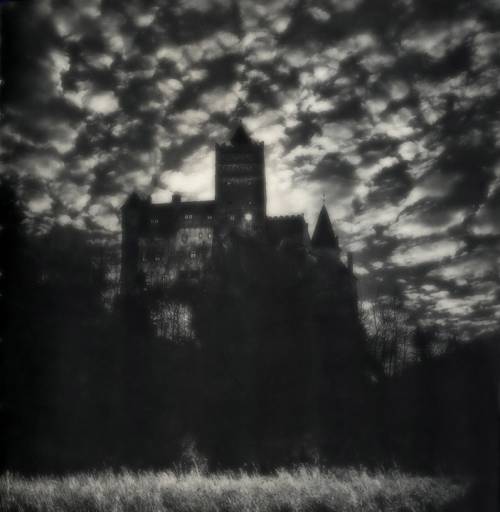 gothic as dark Romantic setting |
![]()
|
Monday, 17 September 2018: early Romantic fiction (1820s) Reading assignment(s): Washington Irving, Rip Van Winkle & The Legend of Sleepy Hollow
text reader(s) / discussion leader(s): Clark Omo [from 2016 course] (Rip Van Winkle); instructor (Sleepy Hollow) Clark also demonstrates Model Assignments Presentation for midterms
terms: Romantic rhetoric and diction; sentimental stereotypes; romance narrative |
Agenda: where are we in course? historically? periods of literature: Enlightenment / Age of Reason 1700s > Romanticism late 1700s > Realism (late 1800s) Hudson River School of American Painters presentation assignments Rip Van Winkle discussion: Clark Omo Sleepy Hollow discussion: instructor [break] midterm; next week's assignments & presenters (Tabatha, Curtis) narrative genres > romance narrative poetry: Whitman |
|
|
Discussion Questions: (overall question): Why do people remember and like these stories and still have some kind of appetite for them? How do they count as both popular and classic literature?
1. Besides cartoons and movies, how and why does everyone already know the stories of Rip Van Winkle and Sleepy Hollow, even if you've never read them before? (Not asking for practical answers but analysis of why these stories remain relevant or memorable to modern America.) 2. What about these stories is essentially American and appeals to American readers? How are these stories still about America?
3. Identify the gothic (esp. the wilderness gothic), the sublime, and correspondence in Rip Van Winkle & Sleepy Hollow.
4. Historicism: How do we learn history from fiction, and how does fiction shape history? (+ historical fiction)
5. Rip Van Winkle and Sleepy Hollow are early Romanticism, but also late Classical-Enlightenment, esp. in use of Satire. How is the characterization satirical or comical / humorous?? (see Periods of Literature)
5a. Romanticism usually isn't funny—why not? (Realism tends to be more humorous, e.g. Mark Twain, Ben Franklin.) How are the stories told by Rip Van Winkle & Sleepy Hollow comedy as well as romance narrative? (narrative genres) |
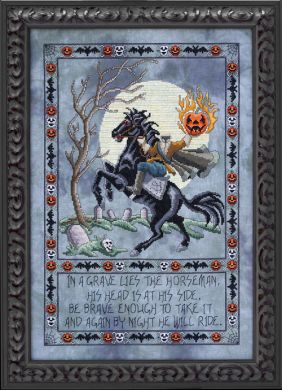 |
![]()
|
|
Discussion Questions: 1. Identify Romantic themes and the romance narrative in Wide, Wide World and Lamplighter.
2. The Wide, Wide World (1850) was the USA's best-selling novel until Uncle Tom's Cabin (1851-2); The Lamplighter (1854) sold even more. How do today's texts resemble popular and classic literature then and now? What are these texts' critical strengths and weaknesses? What pro's or cons for studying historic popular literature?
2a. Identify & evaluate sentiment or sentimentality—what reactions to scenes of tears? everyday life? How Realistic? How Romantic?
3. Evaluate the
evangelical content of both texts. How to teach such texts
in a public university? What pro's & cons to treating as literature or history? (e.g.,
The Second
Great Awakening)
What values
compatible with or contrary to Romanticism may conversion or evangelism emphasize?
4. Together with religious obedience and self-control, how does the novel also indirectly represent Romantic rebellion and passion? (Compare Jane Eyre (1847).) How are Romantiism and Christianity compatible or not? |
 |
![]()
Monday, 1 October 2018: midterm exam & research proposal No class meeting—email midterms due by midnight, Wednesday 3 October.
![]()
|
Monday, 8 October 2018: Poe Poetry & Stories Reading assignment(s): Edgar Allan Poe, The Fall of the House of Usher; William Wilson; selections from The Philosophy of Composition; The Raven Poe Style Sheet (includes biographical information) terms: Byronic hero, biographical fallacy, gothic, sublime, formal verse, romance, desire & loss
text reader(s) / discussion leader(s):
Tommy Brewer (Raven); Brandon Burrow (Usher)
|
Agenda: Romantic classical music midterms; Romanticism & romance Poe The Raven: Tommy [break]+ Peer Gynt suite next week's assignments Poe, House of Usher: Brandon William Wilson |
|
|
Discussion Questions: (Poe's biographical information at Poe Style Sheet) Overall discussion: How does Poe stand as the USA's "most Romantic author" in terms of style, persona, subject matter, & various Romantic attributes? (specific terms & questions below)
1. In light of how un-Romantic Poe's life was, how and why do we romanticize his image? Compare the Byronic Hero.
2. Identify the Romance narrative: Desire and loss or love and loss in Poe's life and writings
3. Identify the gothic in Poe's writings. How is Poe's gothic classic-European + psychological? (compare / contrast "wilderness gothic" in Sleepy Hollow) House 1,2, 4, 7, 17, 24; Wilson 4, 9, 11, 24-5 3a. Why does the gothic matter? Is it just superficial style, or potential larger meaning?
4. How is "Twinning" (e.g. William Wilson) both gothic + psychological? (cf. doppelganger) House 25, 35, 38, Wilson 15 but 28; Man 13, 17
5. Style: How / why may Poe's poetry and prose be regarded as "musical?" (see Poe Style Sheet)
6. Is Poe a Classic, Popular, or Representative author? Poe entertains, but what can you learn from him? (Art's purpose to entertain & instruct) |
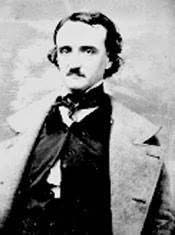 |
![]()
|
Monday, 15 October 2018: Hawthorne: Puritan Gothic Reading assignment(s): Hawthorne, The Minister's Black Veil; Young Goodman Brown Hawthorne Style Sheet; variations on the gothic
text reader(s) / discussion leader(s): Ruth
Brown (Minister's
Black Veil); Justin
Butler (Goodman Brown)
|
Agenda: midterms; instructional materials, review Poe genres final exam: origins of gothic; variations on the gothic + Classic, Popular, or Representative Hawthorne Minister's Black Veil: Ruth Young Goodman Brown: Justin [break] assignments poetry: comparing Poe, Dickinson, Whitman Dickinson poem |
|
|
Discussion Questions:
1. How do Hawthorne's style and content make him a "classic" author, in comparison to Poe's popularity? What aspects make him almost popular? (see Hawthorne Style Sheet)
2. Compare / Contrast to Poe as gothic. How do the two authors use the style differently for different purposes?
3. How does Puritanism conform to a gothic treatment? Besides standard gothic paraphernalia (color code, secrets, past, crime / sin, death / decay), how does Hawthorne elevate the gothic to classic uses? (See variations on the gothic)
3a. historical referent: Puritan belief in original sin as common human nature. Compare or apply to "Minister's Black Veil"
4. "Young Goodman Brown" is widely taught, but the text's ethical or moral meaning is confusing because of Hawthorne's irony and ambiguity. Goodman seems to do the right thing by refusing to identify with sin and Satan, but the consequences of his choice are disastrous. What to do with such an outcome for "just say no?"
|
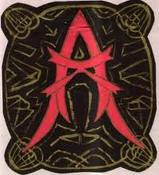 |
![]()
|
Monday, 22 October 2018: The antebellum Women's Movement Reading assignment(s): Margaret Fuller, The Great Lawsuit Elizabeth Cady Stanton, The Declaration of Sentiments Sojourner Truth, Ain't I a Woman? (Speech to the Women's Rights Convention) Harriet Beecher Stowe, "Sojourner Truth, the Libyan Sibyl" text reader(s) / discussion leader(s): Breanna Runnels (Fuller &/or Stanton); Kristina Koontz (Truth & Stowe) terms: Transcendentalism; meritocracy |
Agenda: assignments; course objectives; romance narrative; Transcendentalism & Romanticism Stanton &/or Fuller: Breanna [break] Truth &/or Stowe: Kristina
|
|
|
Discussion Questions: 1. How do today's writers qualify as Romantic figures—or not? What is Romantic (or not) about their personal styles, their writing styles, or their subjects?
2. How surprising is it to find a women's rights movement in antebellum USA? Note convergences of the women's movement with anti-slavery (Abolition) movement. How are such movements conceivably Romantic? Or, how do they anticipate or follow the romance narrative?
3. How may the romance narrative conform to the USA's national narrative of equality, liberty, progress by extension of rights? (Compare Declaration of Independence & U.S. Constitution.)
Specific questions for authors: Margaret Fuller: How does Fuller use or vary the Transcendental style or themes developed by Emerson for gender analysis and women's equality? How does her style (content & technique) resemble Emerson and Thoreau but also differ from them?
Elizabeth Cady Stanton: Compare / contrast The Declaration of Sentiments with the Declaration of Independence .
Sojourner Truth was a unique and charismatic historical figure. What difference does her illiteracy make for literary studies? Why do students always seem to want more of her? (Compare to Poe?) What kind of challenge does she present to Stowe? |
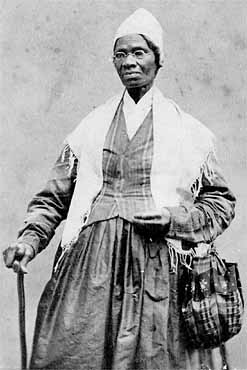 |
![]()
|
Monday, 29 October 2018: Slave Narratives: Romance & Reality Reading assignment(s): Frederick Douglass, A Narrative of the Life (1845) (Douglass author page) Harriet Jacobs, Incidents in the Life of a Slave Girl (1861) text reader(s) / discussion leader(s): Kyle W. Abshire (Douglass); Anne Ngo (Jacobs)
|
Agenda: Maps; assignments; next semester's courses: narratives of history; multiculturalism > representative literature (final exam) Douglass: Kyle Romantic form: individual in nature 10B Jacobs: Anne Symbols & color codes in Langston Hughes, "Dream Variations" & Countee Cullen, "From the Dark Tower"
|
|
|
Discussion Questions: 1. How do antebellum history and Romantic form (including the romance narrative) meet in the slave narratives? (Objectives 2 & 1)
1a. Unlike a Poe story, slavery really happened as history, but slave narratives also became popular literature. Why? What’s inherently “Romantic” about the slave narrative? How does the slave narrative resemble a romance narrative? (Sometimes Douglass is even classified as a Transcendentalist--Why?)
1b. What's not Romantic? At what points does historical Realism contradict Romanticism or disrupt the romance narrative?
2. Both authors, esp. Douglass, stress significance of literacy—what is the role of language in enabling outsiders into a culture? (Another meeting of literary form and history?) Compare contrast with Sojourner Truth?
3. How to discuss slavery, especially in a Confederate state like Texas? (standard defensive Anglo responses: "That was a long time ago." "We wouldn't have done that." "That's all fixed now." Analyze & criticize in terms of Romantic heroic individualism vs. Realistic sociall pressure!)
4. Back to history and Romantic form, how does Jacobs's narrative resemble a novel in its use of sentiment, domesticity, even the gothic?
5. How do people of color challenge Western Civilization's color code? (cf. Stowe, "Sojourner Truth", 39) |
 Jacobs
|
![]()
|
Monday, 5 November 2018: Civil Disobedience & Old-Time Religion
Reading assignment(s):
discussion leader(s): Kristen
Hoover (Thoreau
& Emerson); instructor (Seguin)
Web Review / Outside Text:
Mexican-American
War Web Reviewer: instructor
poetry: Edgar Allan Poe, "Annabel Lee" (ballad) poetry reader / discussion leader: instructor (recording) |
Agenda: final exam; question options (Civ Dis & morality) Thoreau: Kristen [break] assignments Mex-Am War: instructor Seguin as representative literature ? Poe poem: instructor; comparing Poe, Dickinson, Whitman |
|
|
Background: Thoreau is best known as one of the major Transcendentalists and for writing Walden; or, Life in the Woods (1854) about living by himself in nature for a year.
Discussion Questions: 1. how does Thoreau's essay exemplify familiar forms of Transcendentalism, Romanticism, and the romance narrative? Where do Transcendentalism and Romanticism overlap or separate? (Venn Diagram) How does Thoreau's journey parallel Rip Van Winkle's and Young Goodman Brown's?
1a. If Thoreau is a Transcendentalist, how does "Resistance to Civil Government" advocating abolition of slavery and civil disobedience challenge or expand our ideas of Thoreau and of Transcendentalism? Or maybe confirm?
2. How does Emerson's eulogy Thoreau romanticize its subject? What are the charms and costs of heroic individualism?
2a. How much is Thoreau, like Poe or Emily Dickinson, something like a fictional character in the study of American literature—a figure whom literary people embrace, imitate, or reject? What is the nature or style of this character? What picture of Transcendentalism develops through Thoreau?
4. How do Seguin's Memoirs qualify as representative literature? That is, Mexican American literature barely appears in normal American Renaissance studies, even though the Mexican-American War took place during this time. How may Seguin's Memoirs be included (or not) as part of classic American literature or as a statement of Mexican American cultural history at the time?
4a. What challenges to teaching representative literature? (e.g. defensiveness, keep head down, fear of being called racist or sexist, fatigue) |
 Seguin |
![]()
|
Monday, 12 November 2018: Stowe & Uncle Tom's Cabin Reading assignment(s): Harriet Beecher Stowe, selections from Uncle Tom's Cabin (1851-2) text reader(s) / discussion leader(s): Lauren Kruse Web Review / Outside Text: Uncle Tom's Cabin & American Culture: a multi-media archive Web Reviewer:
Web Review / Outside Text:
Reminiscences of Levi Coffin |
Agenda: schedule, assignments UTC website: instructor Uncle Tom's Cabin discussion: Lauren civil disobedience (final exam): Thoreau > Levi Coffin: North Star as symbol? |
|
|
Discussion Questions: 1. In our discussions of Classic, Popular, and Representative Literature in the American Renaissance, observe how a history-making fiction like Uncle Tom's Cabin may fulfill all three types or appeals at once. How is Uncle Tom's Cabin Classic, Popular, and Representative, all at once, more or less? How may this account for the extraordinary impact of Uncle Tom's Cabin? (Essay option C4 on final exam)
1a. As far as "representing" African America, how has Uncle Tom's Cabin been controversial for its representation of African Americans, especially as "sentimental stereotypes?"
2. How did Stowe become (in Lincoln's words) "the little lady who started this big war"? (i.e., the Civil War) What strategies does she use to make white readers sympathize or care? What does fiction achieve that the slave narratives or other nonfiction prose like Thoreau's Resistance to Civil Government did not? (For example, her absorption of historical materials like slave narratives or Levi Coffin's Reminiscences.)
3. How does Uncle Tom's Cabin combine domestic sentimentality (e.g., Wide, Wide World; Lamplighter) with political activism, particularly as civil disobedience? (Look for examples of civil disobedience in the slaves' activities relative to cruel masters.)
4. How might Stowe's appeal be both Transcendental and Evangelical? How might her style be both Romantic and Realistic? (Local Color movement)
5. If slavery is a sensitive subject, what about slavery + sexuality in the mid-1800s? How does Stowe manage the sexual nature of slavery for women like Eliza, Cassy, & Emmeline? Compare to Harriet Jacobs, Incidents in the Life of a Slave Girl. How do these writers find ways to speak the unspeakable or shameful?
6. [Question for Coffin's Reminiscences] If Uncle Tom's Cabin is fiction and Coffin's Reminiscences are nonfiction, how can you tell the two apart? What are the appeals or advantages of each? Why do most readers prefer fiction to nonfiction?
6a. [Additional questions for Coffin's Reminiscences] Observe differences and similarities between Stowe's and Coffin's representations of Civil Disobedience. |
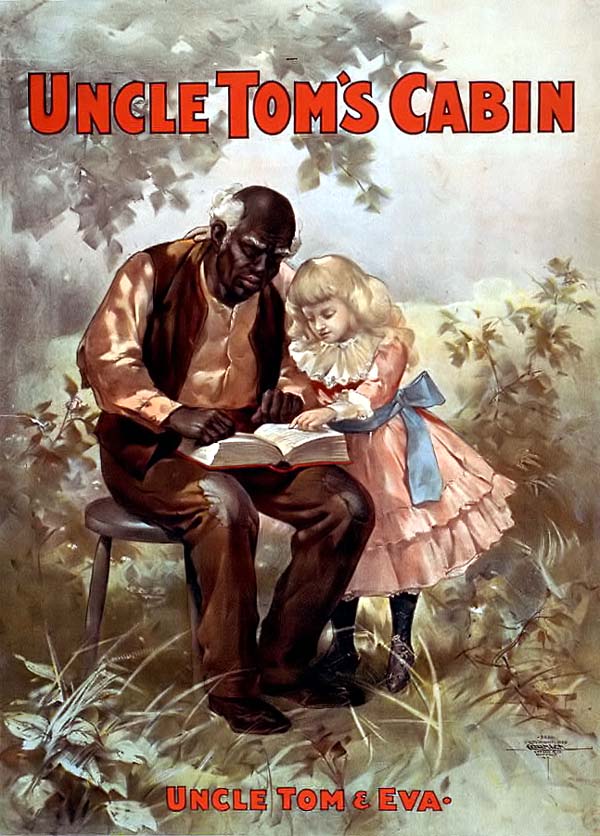 |
![]()
|
Monday, 19 November 2018: Lincoln, Alcott, Whitman Reading assignment(s): Abraham Lincoln, The House Divided Speech; The Gettysburg Address; The 2nd Inaugural Address Hawthorne on Lincoln; Emerson on Lincoln; Frederick Douglass, descriptions of Lincoln from Life & Times of Frederick Douglass; Frederick Douglass, speech on Lincoln Louisa May Alcott, from Hospital Sketches (1863) Amendments 13-15 of the U.S. Constitution text reader(s) / discussion leader(s): Tim Doherty (any)
Web Review / Outside Text: U.S. Civil War Casualties leader: instructor
poetry:
Whitman, "The Wound-Dresser"
(Whitman
style sheet)
comparing Poe,
Dickinson, Whitman |
Agenda: schedule, assignments; periods: rhetorical / poetic devices discussion re Lincoln: Tim [break] Alcott discussion: Tim [break] Whitman Civil War Whitman poem: Cynthia |
|
|
Overview & Overall Question: Our next-to-last class is our most historical day as it reaches the end of the American Renaissance with the U.S. Civil War (1861-65). What are the advantages and risks of reading literature in relation to history? What is gained or lost? (question option C3 on Final Exam) Can we imagine reading and discussing Amendments 13-15 of the U.S. Constitution as literature? What is gained or lost by doing so?
Discussion Questions for today's readings:
2a. As a political speaker, what figures of speech or rhetorical devices does Lincoln use that are comparable to those in literary texts? Consider extended metaphor, allusion, anaphora / parallelism, catalog. How does Lincoln sound biblical without violating separation of church and state?
Alcott memoir & Whitman poem: The American Civil War was among the first modern wars involving industrial firearms and massive military and civilian destruction, creating an enormous humanitarian crisis involving nearly a million casualties—
3. Compare to Thoreau and slavery / abolition: how do conscientious individuals respond besides fighting for their side in war?
4. In what ways is Alcott a Romantic or Transcendental author, and how or where is she Realistic? Note use of domesticity & sentiment. How are these qualities changed with patriotism? Also Alcott shows far more wit & humor or comedy than earlier Transcendentalists and Romantics—how? (Clue: relate to Realism) (Question C5 on final exam) |
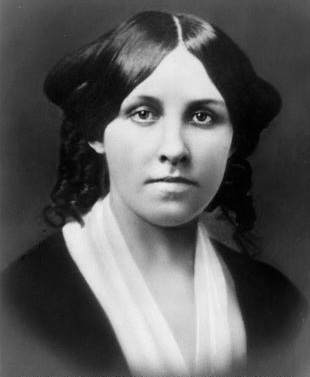 Louisa May Alcott |
![]()
Monday, 26 November: No class meeting; Instructor keeps office hours 3-7 for consultations on research project
Research Project (Research Essay, Journal, or Conference Paper) due by midnight Wednesday, 28 Nov.
![]()
|
Monday, 3 December 2018: Life in the Iron Mills: Realism or Romanticism? Reading assignment(s): Rebecca Harding Davis, Life in the Iron Mills (1861) Text reader(s) / discussion leader(s): Instructor reviews: periods of literature; Realism Poetry: Emily Dickinson, [A light exists in spring] (Dickinson Style Sheet): instructor |
Agenda: online evaluations; final exam Romanticism & Realism periods & style Iron Mills discussion [15 minute break for evaluations?] poetry essay assignment, Models: Dickinson poem |
|
|
Discussion Questions: 1. Identify the gothic adapting to an early industrial site! (final exam question C1)
1a. What other American Renaissance or Romantic styles appear? Consider: Transcendentalism, Evangelical Christianity?
2. After the Civil War, Romantic literary styles and subjects were succeeded by Realism. How does Life in the Iron Mills seem Realistic, and how does it cling to Romanticism? (final exam question C5)
3. What are the different appeals of Romanticism and Realism? How do the two styles respond to different historical contexts? |
 Rebecca Harding Davis |
![]()
Monday, 10 December 2018: final exam (email exams due by noon Wednesday 12 December)
No regular class meeting; classroom available to students during class period; instructor keeps office hours 3-7pm.

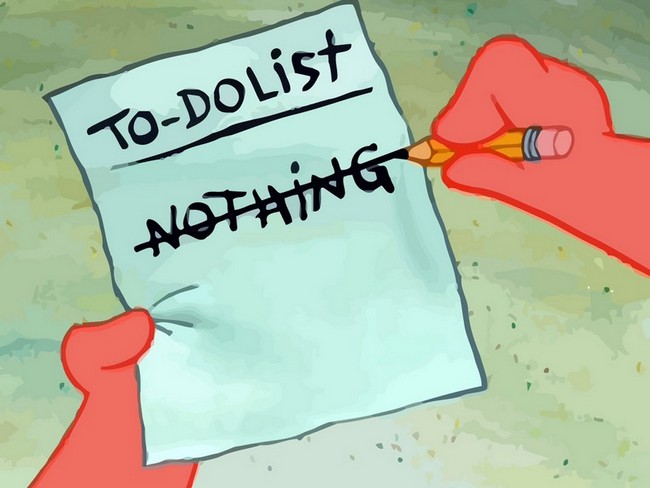
![]()
Course Objectives:
Unifying purpose: form = content
Unite literary forms (style, genre, narrative, symbols, etc.) with . . .
content (literary & cultural history, periods, texts, authors); compare purpose of literature to entertain & inform.
Examples (many other possibilities):
![]() Gothic
= form or style + psychology
(Poe, Hawthorne) or morality (Hawthorne: light as good, dark as evil, shades of
gray); African American literature as inversion of
color colde
Gothic
= form or style + psychology
(Poe, Hawthorne) or morality (Hawthorne: light as good, dark as evil, shades of
gray); African American literature as inversion of
color colde
![]() Romance narrative
(form) as
plot-patteern for individual desire, social progress, and
nostalgia for loss of old magical
world
Romance narrative
(form) as
plot-patteern for individual desire, social progress, and
nostalgia for loss of old magical
world
![]() Transcendentalism as intellectual idealism
(incl. forms of ascendance
Transcendentalism as intellectual idealism
(incl. forms of ascendance
![]() ) + social reform (women's rights, abolition, etc.)
) + social reform (women's rights, abolition, etc.)
![]() Poetry as
style + subject: Poe as formal verse and formula-Romanticism; Whitman frees
verse and opens poetry to non-poetic subjects;
Poetry as
style + subject: Poe as formal verse and formula-Romanticism; Whitman frees
verse and opens poetry to non-poetic subjects;
Objective 1: Romantic terms and forms
1a.
Romanticism:
desire & loss, rebellion,
nostalgia, idealism,
the gothic,
the sublime,
the individual in nature
or separate
from the masses;
correspondence;
symbol;
metaphor, pastoral
1b. Romance narrative: quest / journey across physical, social, psychological boundaries to gain or regain transcendent dream.
1c. Romantic heroic individual: often
formulaic but noble, fresh, and winning (or tragic); too good for this world or
not of this world; innocent of anything but readiness to change or desire to
re-invent the self or world; fair lady / dark lady or golden boy / Byronic hero
1d. Romantic genres:
![]() The
romance
narrative
appears most in fiction: short
stories and the
novel,
mass-market genres of entertainment, instruction (self-improvement), manners
and morals for the rising literate middle class
The
romance
narrative
appears most in fiction: short
stories and the
novel,
mass-market genres of entertainment, instruction (self-improvement), manners
and morals for the rising literate middle class
![]() gothic
novel or style
(variations: wilderness gothic, psychological gothic, Euro-style gothic,
industrial gothic)
gothic
novel or style
(variations: wilderness gothic, psychological gothic, Euro-style gothic,
industrial gothic)
![]() lyric
poetry
lyric
poetry
![]() the
essay or speech
/ lecture (esp. for
Transcendentalists < Puritan sermon tradition?)
the
essay or speech
/ lecture (esp. for
Transcendentalists < Puritan sermon tradition?)
![]()
![]()
![]()
![]()
![]()
Objective 2: History of
Romanticism esp. in
Romanticism is an international artistic and cultural movement involving music, literature, painting, sculpture, dance, politics.
Dates: Romantic period in
Music: Beethoven, Wagner, Chopin, Schubert, Brahms, more
Politics: Napoleon,
Romanticism accompanies Western Europe's and the
|
|
|
2a. Modern
If "
2b. Literature as
symbolic code for
problems and values of American culture: freedom, equality
(race,
gender, class);
modernization and tradition;
individualism, family values, community / nation; nature.
![]() American Romanticism exposes
competing or complementary dimensions
of the American identity: is
American Romanticism exposes
competing or complementary dimensions
of the American identity: is
![]() How does Romanticism encourage or reflect social
and political progress?
How does Romanticism encourage or reflect social
and political progress?
![]() How do
the Romance and
Romantic values conform to
modernization and a culture of
constant change?
How do
the Romance and
Romantic values conform to
modernization and a culture of
constant change?
Historical terms or movements associated with American Romanticism or the American Renaissance:
![]() Abolition
Abolition
![]() Women’s Rights
Women’s Rights
![]() Evangelism: the 2nd
Great Awakening
&
Millennialism (apocalyptic
movements, +- utopia)
Evangelism: the 2nd
Great Awakening
&
Millennialism (apocalyptic
movements, +- utopia)
![]()
![]()
![]()
![]()
![]()
 |
 |
 |